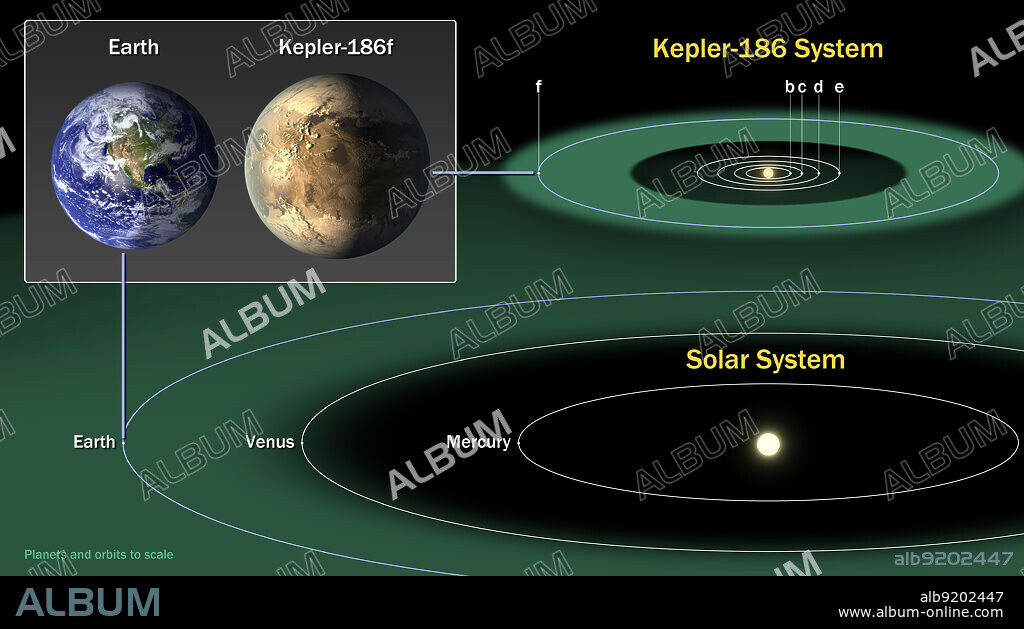alb9202447
Exoplanet Kepler-186 and the Solar System

|
Add to another lightbox |
|
Add to another lightbox |



Buy this image.
Select the use:

Title:
Exoplanet Kepler-186 and the Solar System
Caption:
Diagram comparing the planets of our inner solar system to Kepler-186, a five-planet star system about 500 light-years from Earth in the constellation Cygnus. The five planets of Kepler-186 orbit an M dwarf, a star that is half the size and mass of the sun. The Kepler-186 system is home to Kepler-186f, the first validated Earth-size planet orbiting a distant star in what astronmers call the "habitable zone", a range of distance from a star where liquid water might pool on the planet's surface. The discovery of Kepler-186f confirms that Earth-size planets exist in the habitable zones of other stars and signals a significant step toward finding a world similar to Earth. The size of Kepler-186f is known to be less ten percent larger than Earth, but its mass and composition are not known. Kepler-186f orbits its star once every 130 days, receiving one-third the heat energy that Earth does from the sun. This places the planet near the outer edge of the habitable zone.
Credit:
Album / NASA/Ames/SETI Institute/JPL-Caltech / Science Source
Releases:
Image size:
Not available
Print size:
Not available
Keywords:
2010S • 2014 • 21ST CENTURY • 21ST • 21TH CENTURY • ART • ASTRONOMIA • ASTRONOMY • ASTRONOMY: OBSERVATORY • BODY • CELESTIAL • CENTER • CENTURY • COMPARE • CORE • DEEP • DWARF • EARTH-LIKE • EARTH-SIZE • EPROMO-436 • EXOPLANET • GALACTIC • GALAXY • GRAPHIC • HABITABILITY • HABITABLE • HEAVENLY • ILLUSTRATION • ILLUSTRATIONS • ILUSTRATION • INHABITABLE • JC6196 • KEPLER • KEPLER-186 • KEPLER-186B • KEPLER-186C • KEPLER-186D • KEPLER-186E • KEPLER-186F • MILKY • MISSION • NUCLEUS • OBSERVATORY • ORRERY • OUTER • OUTERSPACE • PLANET • PLANETARIUM • PLANETARY • PLANETS • RED • SCIENCE • SOLAR • SPACE (COSMOS) • SPACE • SPATIAL • SPECTRAL • STAR • SYSTEM • TERRAN • TERRESTRIAL • TYPE • WAY • ZONE
 Pinterest
Pinterest Twitter
Twitter Facebook
Facebook Copy link
Copy link Email
Email
